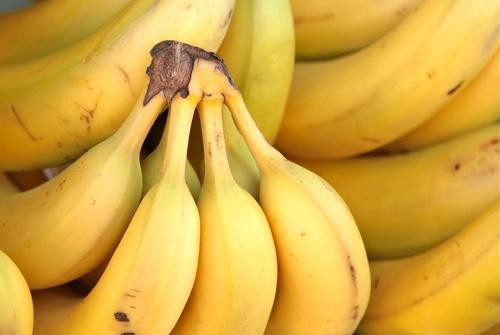
Most of us toss fruit peels in the trash, because what else are you going to do with them? Eat them! It turns out they’re not just edible, but the skin and rind of some fruits is actually loaded with fantastic beauty and health benefits. Kimberly Snyder, celebrity nutritionist and author of The Beauty Detox Foods, says there are many great ways to incorporate these nutrient-rich peels into your diet.
“The peel can contain up to three to four times higher a concentration of fiber as the fruit inside,” says Snyder. “Fiber is an important part of the body’s process when it comes to cleansing toxins from the body. Peels also contain a bevy of anti-aging antioxidants and vitamins.” By the way, they’re also very low in calories, fats, and sugars.
“For some citrus fruits like oranges, the peel has even higher levels of vitamin C than the juice,” says Snyder. The peel of fresh orange also contains vitamin A, B vitamins, and minerals such as zinc, calcium, selenium, and manganese. But how are you supposed to eat them? Snyder suggests zesting citrus peels with a grater into your salad dressing or tossing a piece of the peel into smoothies. “I was recently in Thailand doing a few weeks of a cooking intensive, and we threw kaffir lime peel into the mortar and pestle for certain chili pastes.”
What about banana peels? Sounds gross, but they actually increase serotonin levels, which can boost your mood. Like the fruit, they’re a good source of potassium, but Snyder says they contain much more soluble fiber (which makes you feel full and help lower bad cholesterols) and insoluble fiber (which keeps your gastrointestinal tract moving). In some parts of the world like India and Asia it’s common to cook or fry banana peels or use them in desserts. Try adding a piece into a smoothie or pureeing a few tablespoons and mixing into your cake recipes. Waiting till the fruit is more ripe will yield thinner, tastier skin.
Watermelon rinds are another great option since they contain vitamin C, vitamin B6, and citrulline, an amino acid that helps dilate blood vessels to improve circulation. Peel off the green skin and put the white rind into your juicer along with the juicy pink parts.
Snyder does offer one important piece of advice when eating peels: buy organic. “Not only are organic foods generally more nutritious since they are usually grown in better quality soil, but they also do not contain pesticides,” she says. While organic bananas are not typically much more costly than conventional ones, some organic produce can be pricey. When in doubt, consult the Environmental Working Group’s “Dirty Dozen” items with the most pesticides used. (Check out the full list here.) “If you plan on using the zest or peel of fruits, I would stick to organic as the pesticides can seep into the peel and it may be not possible to truly remove them through washing.”
Don’t forget the cores and seeds! “Pineapple cores are less juicy and a bit harder, but are still very nutritious and filled with the enzyme bromelain, known to have anti-inflammatory and cleansing effects in the body,” says Snyder. She also says eating a small amount of papaya seeds can have anti-parasitic, anti-bacterial effects, and can help with liver detoxification—hello, hangover cure.
https://www.yahoo.com/health/dont-forget-to-eat-the-peel-91875621007.html#

No comments:
Post a Comment